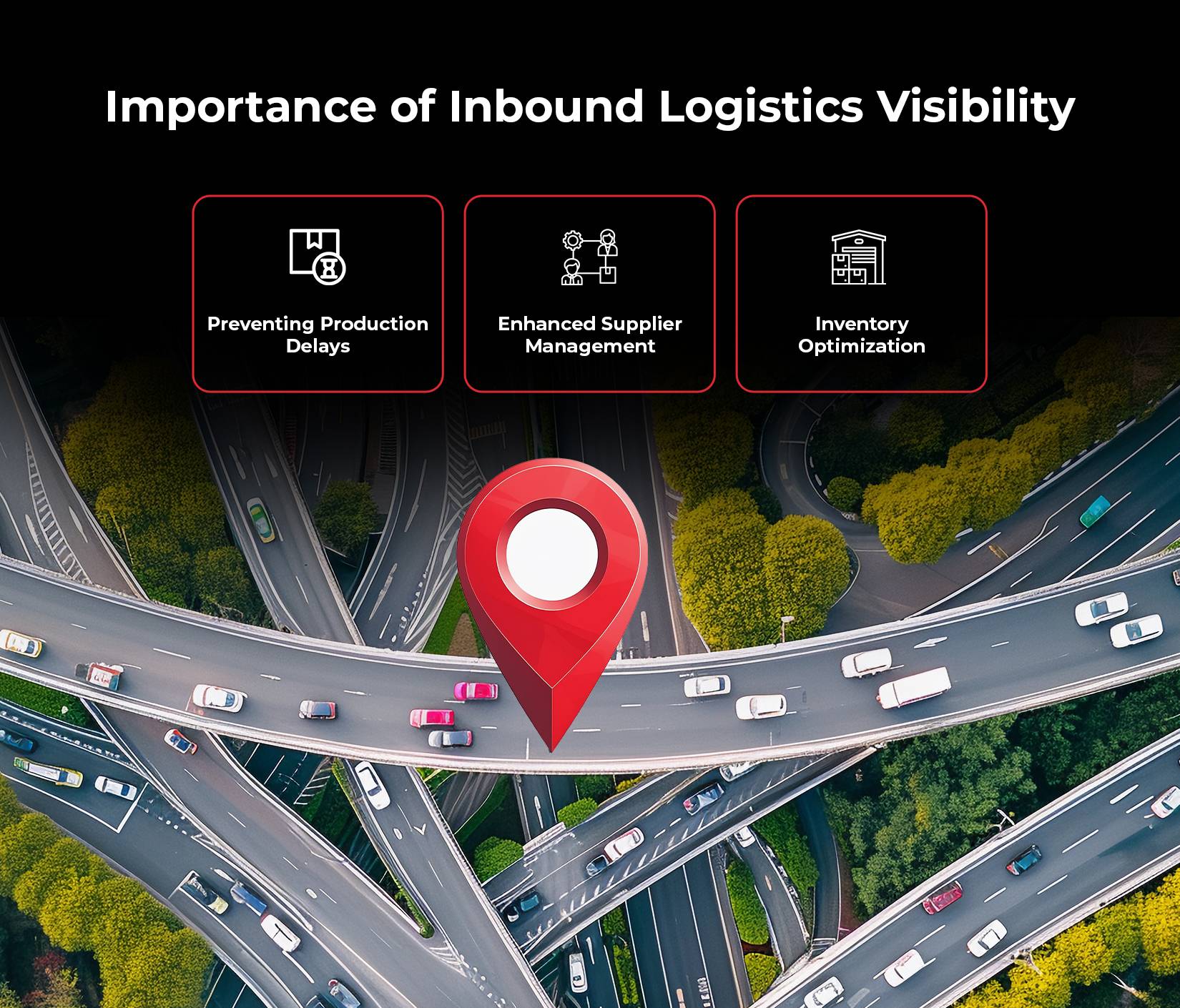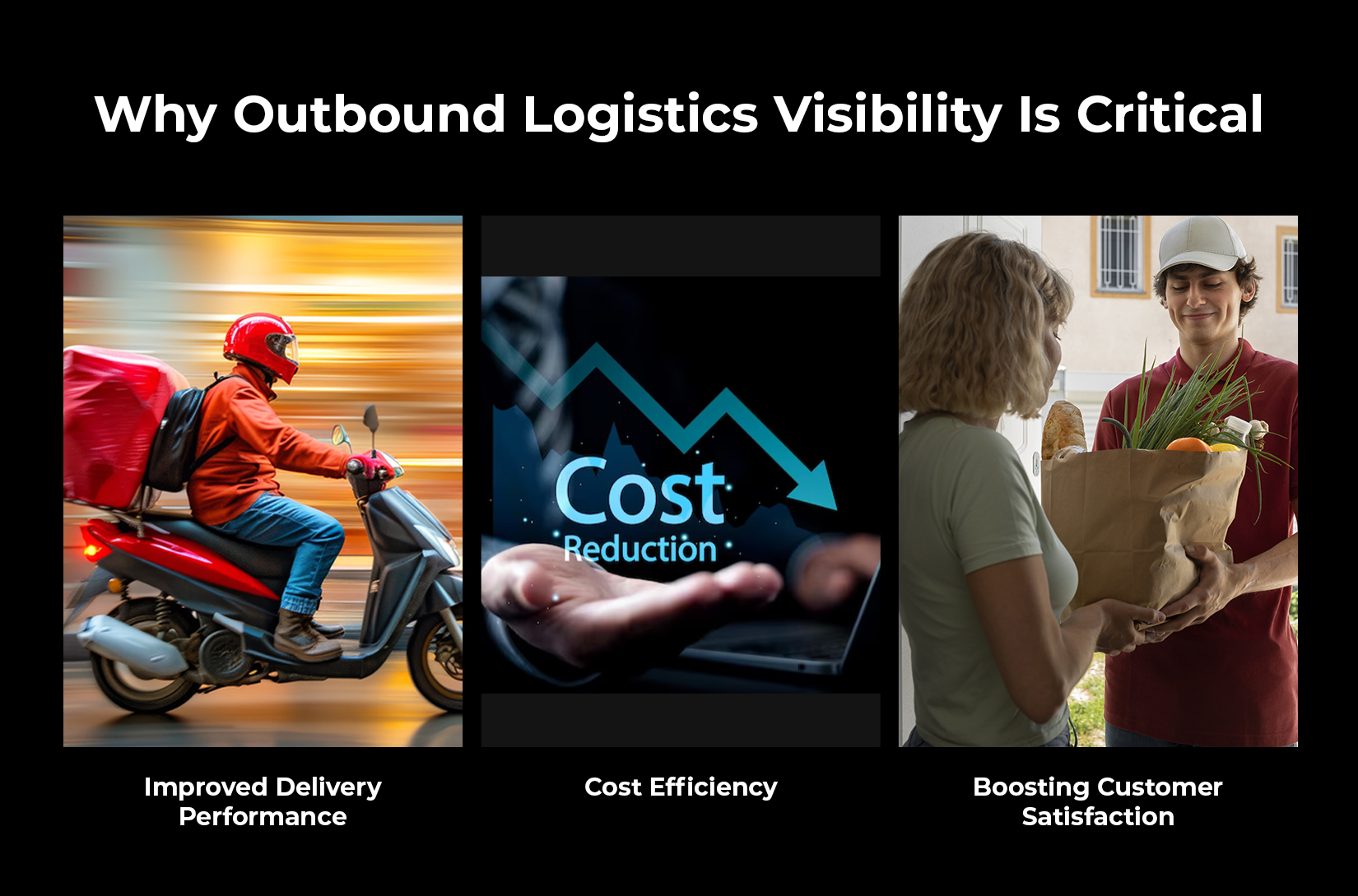
Why Organizations Need Comprehensive Inbound and Outbound Logistics Visibility
In today’s fast-paced supply chain environment, logistics visibility has become a critical need for organizations. With global markets expanding and consumer demands growing more complex, businesses must ensure seamless coordination across their supply chains. Both inbound and outbound logistics play crucial roles in this process. For organizations to remain competitive and cost-effective, comprehensive visibility into these logistics processes is essential.
What is Logistics Visibility?
Logistics visibility refers to the ability to track and monitor the movement of goods throughout the supply chain, from suppliers to end customers. It includes real-time data on inventory levels, transportation status, and delivery timelines. This level of insight is necessary to manage risks, avoid delays, and enhance decision-making processes.
A 2023 survey by Supply Chain Dive highlighted that 78% of businesses consider real-time visibility as a top priority for improving logistics operations. This shows the growing importance of transparency in supply chains.
When integrated with logistics management software, it enables businesses to optimize their supply chain operations. This visibility is not limited to monitoring shipments; it also covers warehouse management, inventory control, and supplier coordination.
Importance of Inbound Logistics Visibility

Inbound logistics refers to the flow of raw materials, components, and products into a company. The visibility of these operations ensures that materials arrive on time and as expected, preventing production delays and disruptions.
Here’s why inbound logistics visibility matters:
1. Preventing Production Delays:
Poor inbound visibility can lead to delays in receiving materials, impacting production schedules. Comprehensive tracking allows businesses to anticipate these delays and take corrective action, preventing costly downtime.
2. Enhanced Supplier Management:
When companies have full visibility into the status of incoming goods, they can better manage their suppliers. By monitoring supplier performance, businesses can identify trends, address issues proactively, and ensure that suppliers adhere to service level agreements (SLAs).
3. Inventory Optimization:
Inbound logistics visibility also plays a crucial role in managing inventory levels. By tracking shipments, businesses can maintain optimal stock levels, reducing the risk of overstocking or running out of materials. According to a report by McKinsey, effective inbound visibility can improve inventory turnover by up to 10%.
Why Outbound Logistics Visibility Is Critical

Outbound logistics, on the other hand, refers to the distribution of finished goods to customers. Outbound logistics visibility is essential to ensure timely delivery and customer satisfaction.
Here’s how it helps:
1. Improved Delivery Efficiency:
Real-time tracking of shipments allows businesses to monitor delivery progress, reducing the chances of late deliveries. With outbound logistics visibility, businesses can provide customers with accurate ETAs and improve overall delivery reliability.
2. Cost Efficiency:
Outbound logistics visibility enables organizations to optimize delivery routes and reduce transportation costs. By leveraging route optimization tools, businesses can reduce fuel consumption, enhance fleet utilization, and cut operational expenses. Research from Gartner shows that companies with strong outbound logistics visibility see up to a 15% reduction in transportation costs.
3. Boosting Customer Satisfaction:
Customers expect transparency in delivery processes. Outbound logistics visibility enables businesses to provide real-time updates to customers, ensuring they are informed about the status of their deliveries. According to a study by PwC, 86% of customers are willing to pay more for a better customer experience, making transparency a vital component in maintaining loyalty.
The Benefits of Comprehensive Logistics Visibility
Now that we’ve explored the importance of both inbound and outbound, let’s look at how comprehensive visibility benefits organizations across the board.
1. Enhanced Decision Making:
With real-time data, companies can make informed decisions that optimize their supply chain operations. Whether it’s rerouting shipments to avoid delays or adjusting inventory levels, comprehensive visibility provides the insights necessary for proactive management.
2. Risk Mitigation:
Disruptions in the supply chain can have significant consequences for businesses. Comprehensive logistics visibility helps mitigate risks by identifying potential problems early and providing alternative solutions. For example, if an inbound shipment is delayed, companies can adjust production schedules or find alternative suppliers, minimizing impact.
3. Increased Supply Chain Agility:
Agility is a key factor in the success of modern supply chains. With comprehensive logistics visibility, organizations can respond swiftly to changes in demand, disruptions, or other challenges. A report from Deloitte found that companies with agile supply chains are 60% more likely to see improved operational performance.
The Role of Logistics Management Software
Logistics management software plays an integral role in achieving comprehensive logistics visibility. These platforms offer real-time tracking, predictive analytics, and centralized data to streamline operations. In fact, 83% of businesses that implemented such software saw a 10-20% increase in supply chain efficiency, according to a 2022 McKinsey report.
One of the most significant advantages of logistics management software is its ability to integrate various supply chain functions, such as transportation management, warehouse operations, and order fulfillment. This consolidation allows organizations to gain a holistic view of their logistics processes, from inbound to outbound activities.
Boosting Supply Chain Resilience
Comprehensive inbound and outbound logistics visibility is also a key factor in building supply chain resilience. During disruptions like the COVID-19 pandemic, companies with real-time visibility into their supply chains were able to respond more swiftly and mitigate the impact of delays, shortages, and transportation issues.
According to Gartner, 67% of supply chain leaders say they plan to invest in technologies that enhance it in the next two years to increase resilience against disruptions. This trend is being driven by the need to not only meet consumer demands but also to safeguard against external risks such as geopolitical events, natural disasters, and regulatory changes.
Overcoming Challenges with Logistics Visibility
While logistics visibility offers numerous benefits, it is not without challenges. Many organizations struggle with integrating legacy systems and fragmented data sources, making it difficult to achieve comprehensive insights. To overcome these hurdles, businesses should invest in advanced technology solutions that centralize data and provide real-time analytics.
By implementing logistics management software with built-in visibility tools, companies can break down silos and ensure that all stakeholders have access to critical information. This not only improves collaboration across departments but also strengthens relationships with suppliers and customers.
Conclusion
In today’s interconnected world, the ability to monitor and manage the flow of goods is essential for success. Comprehensive inbound and outbound logistics visibility enables organizations to not only meet customer demands but also optimize their supply chain operations. With the help of logistics management software, businesses can achieve greater efficiency, lower costs, and enhanced resilience in the face of disruptions.
To stay competitive, organizations must invest in technologies like LogiNext Mile that provide real-time insights and streamline their logistics processes. By doing so, they will gain the visibility needed to adapt quickly, improve customer satisfaction, and thrive in the complex global marketplace. Click on the red button below and book a demo with LogiNext.
51







@LogiNext